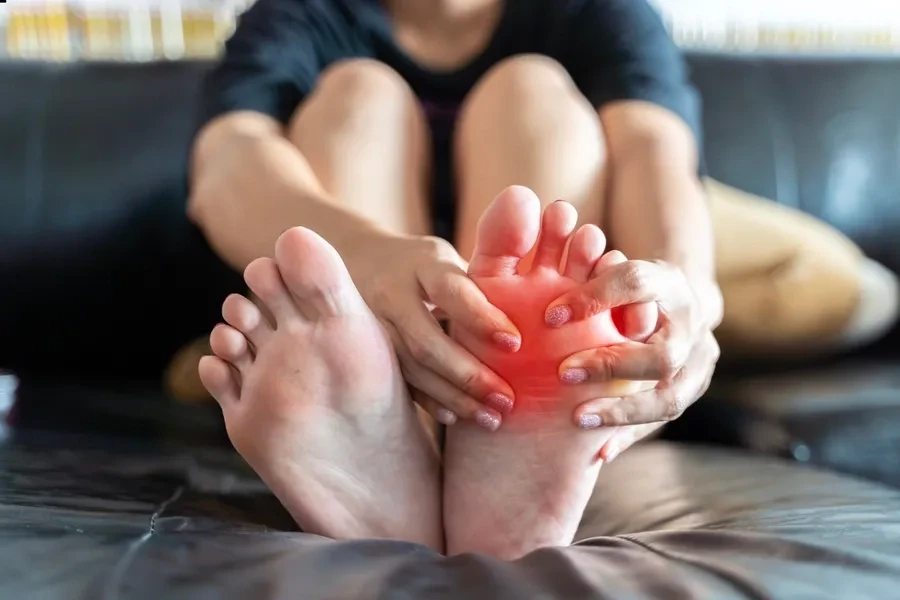Uric acid is a waste product formed when the body breaks down purines found in certain foods.
When the body produces too much uric acid or fails to eliminate it efficiently, the excess can crystallise and accumulate in the joints, especially in the feet.
This condition, known as gout, often first appears in the big toe and can cause severe pain and inflammation.
1. Why does sudden joint pain occur, especially in the big toe?
The hallmark symptom of uric acid buildup is a sudden, intense pain in the joint – most often the big toe. This pain tends to appear without warning, commonly during the night, and can be sharp or burning. Even the weight of a blanket can feel unbearable. Such pain is typically mistaken for an injury or infection, delaying timely diagnosis.
 2. What causes redness and swelling in the affected joint?
2. What causes redness and swelling in the affected joint?
Following the initial pain, the affected area usually becomes swollen, red, and warm. This is the body’s inflammatory response to urate crystals. The skin may appear shiny or stretched. These symptoms often mimic other forms of arthritis, further complicating the identification of gout.
3. How does stiffness and tenderness develop?
As the condition progresses, stiffness sets in, making it painful to move the affected joint. Even light contact, such as wearing socks or shoes, can be excruciating. The persistent inflammation limits flexibility and, if untreated, may result in long-term damage and reduced range of motion.
4. Why do flare-ups or recurring attacks happen?
People with consistently high uric acid levels may experience repeated bouts of gout, known as flares. These episodes can last several days or even weeks. Without management – through medication and lifestyle changes – flare-ups tend to become more frequent and more widespread.
 5. What are tophi and why are they dangerous?
5. What are tophi and why are they dangerous?
In chronic gout, hard lumps called tophi can develop under the skin near joints. These are collections of urate crystals and usually appear around the toes and feet. While not always painful at first, they can eventually damage joint tissues, distort appearance, and break through the skin, increasing infection risk.
Recognising the signs of uric acid buildup early can prevent severe complications and permanent joint damage. If you experience any of the above symptoms, especially recurrent toe or foot pain, consult a healthcare professional for evaluation and treatment.
